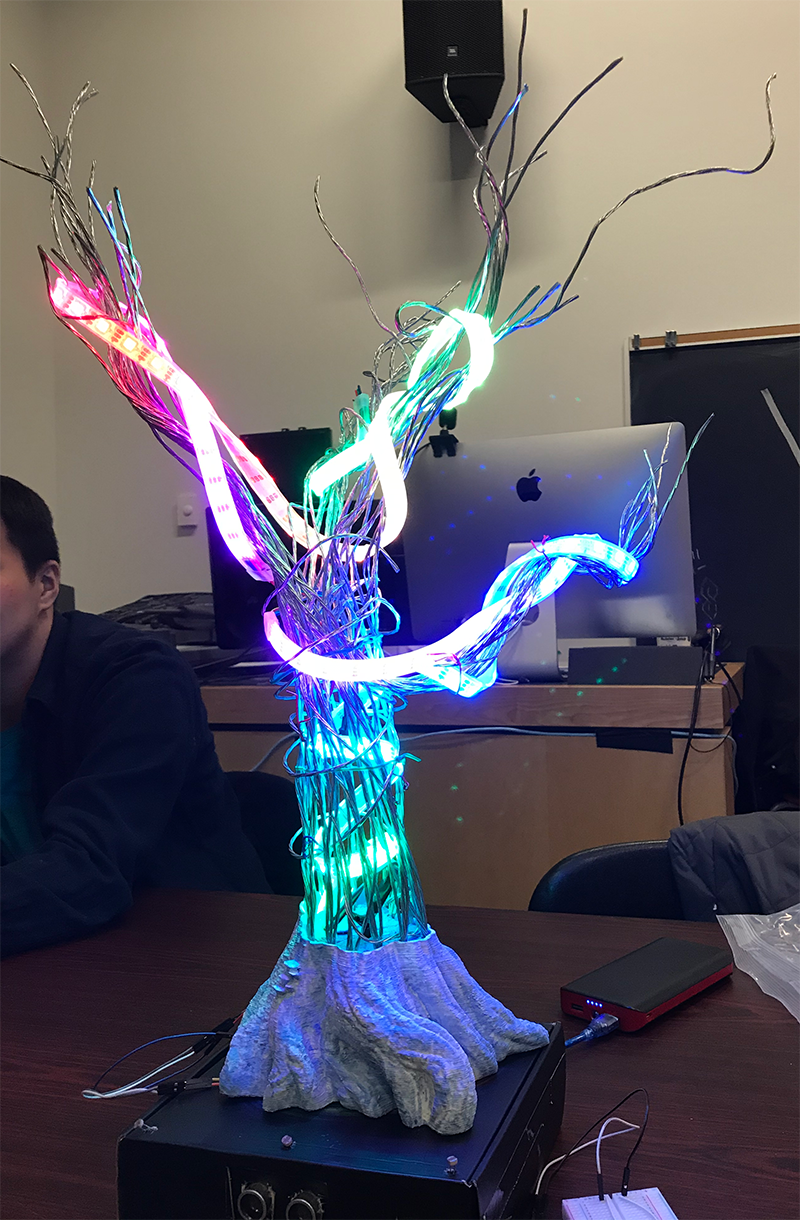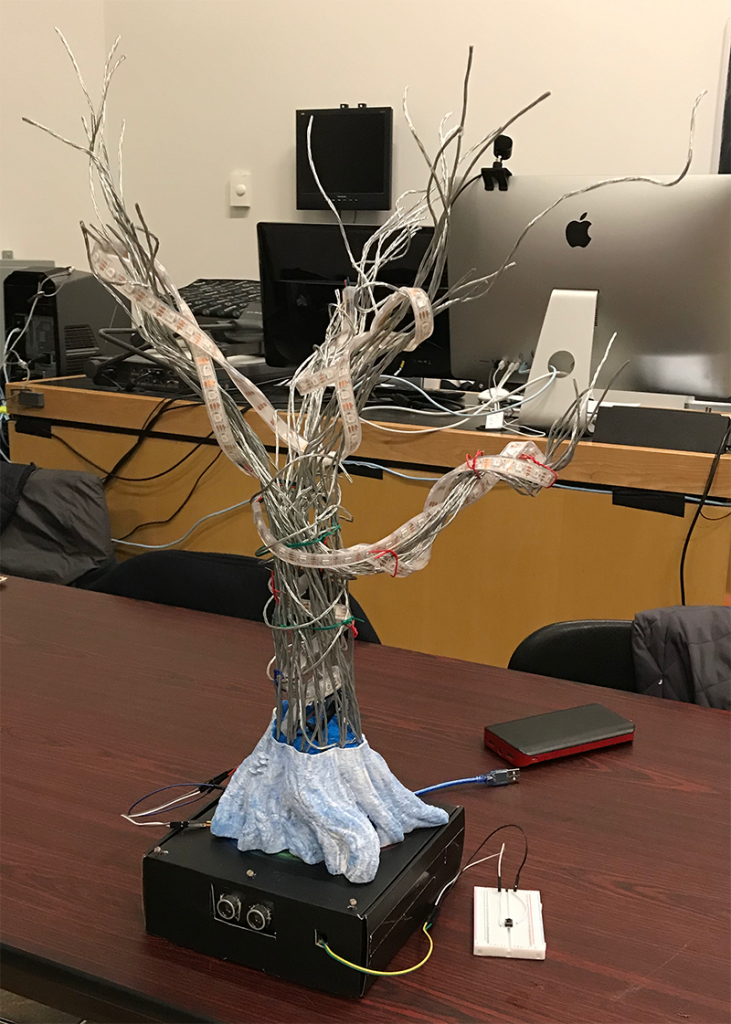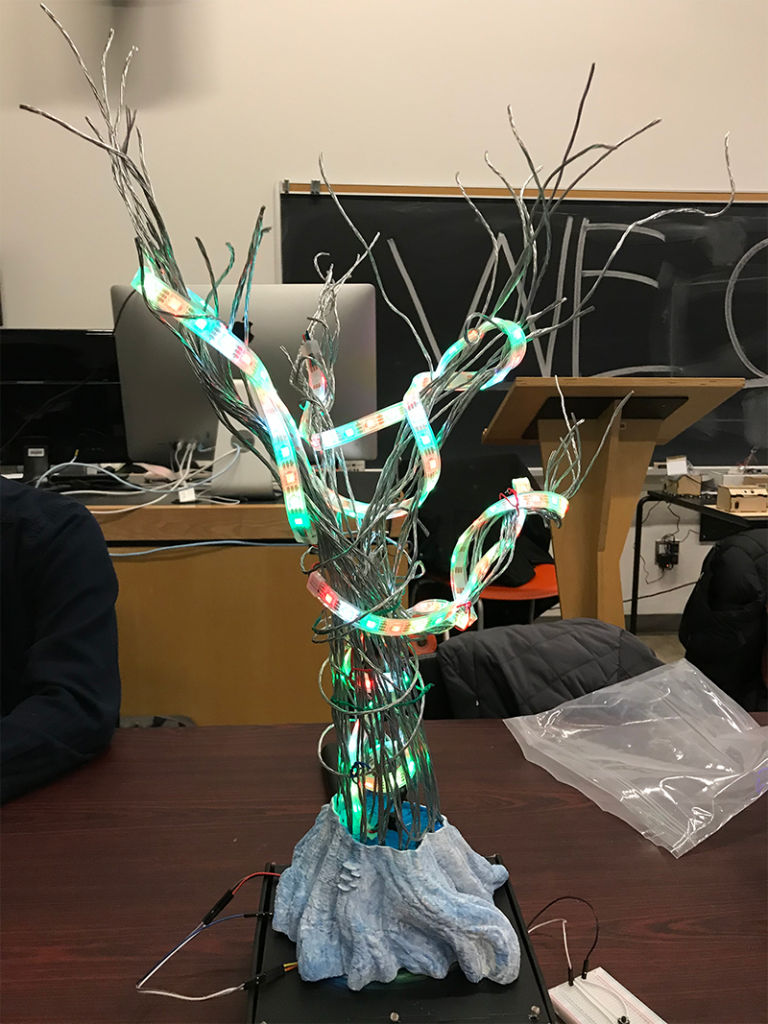This piece is an abstract representation of the forests that were victims to clear cutting and deforestation. After a tree is cut down, only their stumps are left, which we show with our solid 3D printed model. The wires making up the rest of the tree are used to make a flimsy outline the viewer can see through. This is to create a “ghost image” of the tree that was taken away. The lights we used for our tree are meant to “bring the tree back to life.” The different cases we created for the lights are representative of the different “emotions” the tree has to humans interacting with it.
The first case we created was “Anger.” Human interactions with trees are often destructive, and if we think of our installation’s “feelings” towards that, it would be angry and fearful. When the tree turns green, a person is a “safe” distance from the tree. The closer you get past that distance, the more the tree “feels” as if it is in danger.
The second case we created was “Happy/Sad.” Not not all human interactions with trees are destructive. We are all part of an interconnected system, which we both play a big part in. Trees provide essential resources for our survival (such as food and shelter) and create clean air through photosynthesis. We provide them some as well (such as carbon dioxide and fertilizers).
The third and forth cases were less about the tree’s “emotions” and more about our attitudes towards and interactions with trees. The third case was “RGB Interactive,” where an individual would have to interact with the tree to get it to preform a function (in our case changing the colour of the lights), much like how human interactions do in some ways affect the survival, growth, etc. of trees. The fourth case was “Christmas,” which we created not only to be festive, but to remind us that we commonly tie symbolic meaning to trees, showing that they are also important to us spiritually as well as physically.
Matthew Lucchitti
Yu Fujishiro
Catherine Lombardo


